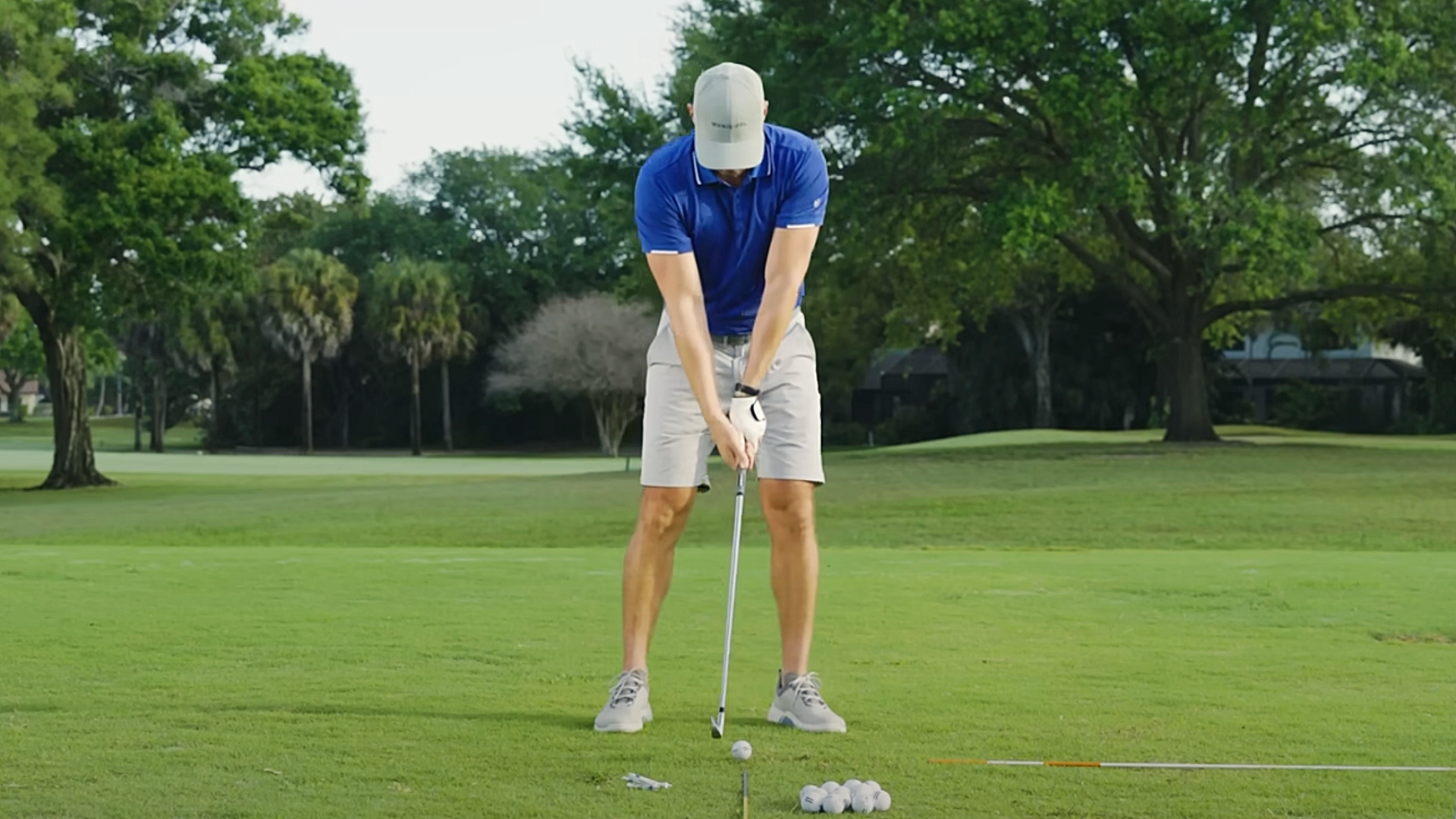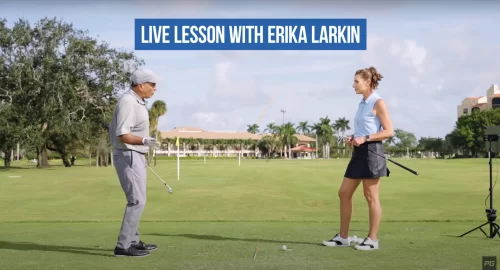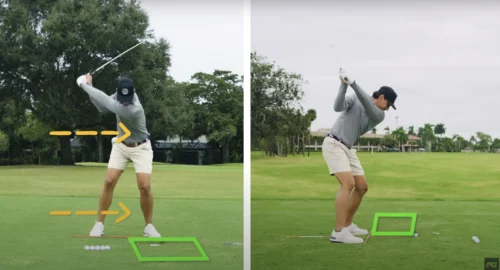
In a world of endless golf tips, it’s easy to forget about the fundamentals. But if you want to play more consistent golf, hit longer shots, and have more fun, you need to master the basics.
One of the fundamentals to a solid golf swing is your stance.
Your golf swing stance sets you up for success or failure. The stance is the starting point that massively influences your balance, stability, power, and accuracy. For a lot of amateur golfers, it’s an overlooked part of the game and could be the real reason you’re lacking consistency.
The correct stance makes it easier to swing the club properly every time, while the wrong one makes it nearly impossible to play consistent golf. An incorrect setup and stance can also lead to a lot of bad habits that can be tough to break later.
Today we’ll get into the basis of a proper golf stance, how it affects your swing, and how to change it based on the clubs and shots you’re hitting.
Golf Swing Stance 101
Your golf swing stance refers to how you position your feet, legs, and body before you ever start the club back on your takeaway. Each part of your lower body helps get you in a solid starting position so you can load up on the backswing and unwind properly.
You might wonder, does a bad stance really affect the golf swing that much? How so? Let’s talk about the checkpoints of the golf swing that are dependent on a great setup and stance.
For a little help on getting the setup right, check out this video from Performance Golf.
Proper Balance
If you watch the pros hit iron shots, you’ll notice they have incredible balance from start to finish. This is because they have a good stance that allows them to rotate and stay balanced throughout their swing.
Aside from Scottie Scheffler, every pro has a balanced swing where they can stare down the shot during the follow through motion. While most amateurs have “happy feet” and lead to all sorts of balance issues. Which is why you might hit a lot of thin and fat golf shots.
Create Plenty of Power
If you’re not hitting your drives as far as you’d like, your stance might be to blame. While there are other factors like flexibility, tempo, and swing speed, your stance is key to generating power.
A stable lower body allows you to rotate properly and then use the ground on your downswing (known as ground force). When you use your lower body properly, the ground will act like a springboard as you explode into the shot.
Better Accuracy and Consistency
One of the most important parts of golf is getting aligned properly to your target. Otherwise, you’ll miss the green left or right from poor alignment – another common mistake among amateurs.
Not to mention, if you consistently aim incorrectly due to stance issues, you might develop bad habits. For example, a lot of golfers aim right of their target and don’t even realize it. This can lead to getting steep on the downswing and pulling shots back toward the target.
Finally, a proper stance will help you produce repeatable swings for better ball striking.
5 Key Checkpoints for a Proper Golf Swing Stance
Now that you know the benefits, let’s get into the different aspects of a good stance. Follow these simple checkpoints to ensure you are setting up to the ball properly on every swing.
1. Foot Positioning

Let’s start by establishing that you need to change your stance based on the shot you’re hitting. A driver stance is different from an iron swing, bunker shot, or putt.
The first thing to consider is the width of your stance.
Longer clubs – like driver and fairway woods – need a wider stance, slightly more than shoulder width apart. This allows you to get a bigger shoulder turn while staying balanced.
While irons and wedges require a stance that is shoulder width apart. Short game shots like chipping width of your stance and putting require a narrower stance.
The other aspect of your feet is alignment, as they should be parallel to your target line. Avoid getting them closed or open so all your body is parallel to the target.
2. Knee Flex
The second part of a good stance is your knee flex. You want to get into a good athletic position with your knees slightly bent at address position.
Make sure to avoid locking them, as you won’t be able to use the ground to generate distance. You also don’t want to flex too much, or you won’t use your lower body properly either.
3. Weight Distribution
The next component of a golf stance is weight distribution at address position.
For most golf shots you want your weight distributed evenly between both feet with a little more on the balls of your feet. The goal is to maintain this position throughout your swing.
Once the club is parallel to the ground on your takeaway, the majority of your weight should be on your back leg. Then, it shifts toward the front leg on the downswing for a proper weight transfer.
Avoid getting too much on your toes, as you’ll “spin out” of the shot and lose out on tons of power. If you struggle with balance in your swing, consider these golf stretches too.
4. Spine Angle
Another crucial component to your stance is spine angle and posture. Avoid getting too hunched over or too upright at the starting position.
With the right knee flex and weight, it should make it easier to slightly tight forward from your hips. This posture will help you avoid injuries and allow you to make a full shoulder turn on the backswing.
5. Arm Position
The final component to a proper golf stance is your arm position. Avoid golf stretches too tight and keep your forearms relaxed.
Your arms should also naturally hang with a slight bend in your elbow. Position your hands slightly ahead of the ball at address when hitting irons and wedges to make a downward strike.
Build a Solid Foundation with the Right Stance
Hopefully you’ve got a full grasp on how important the stance is for the foundation of a consistent golf swing. When you apply these principles, you’ll be swinging like Tiger Woods in 2000!
Remember, your stance is not just where you place your feet, it’s your balance and ability to use your lower body correctly. The wrong stance for certain shots can change your low point, balance, and lead to a ton of mishits. While the correct stance help you hit it consistently well.
If you need help with any part of your swing, be sure to check out Performance Golf’s line of golf clubs, training aids, and more.

